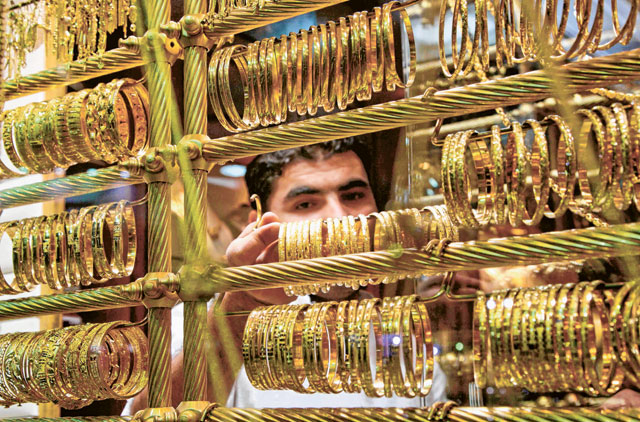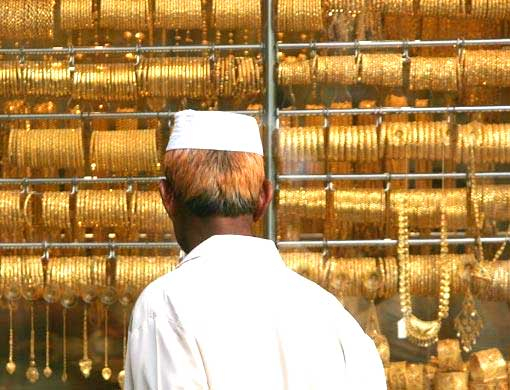Dubai: High gold prices continued to get in the way of global jewellery demand during the third quarter, with all of the key consumer markets - India, China and the UAE - recording drops.
On the institutional buying side, bullion did not have much support from central banks but continued to get sizable help from global funds as a hedge against political uncertainties.
In the latest World Gold Council update, overall demand during the third quarter of 2016 was 993 tonnes, a quite significant dip by 10 per cent compared to the 1,105 tonnes in the same period last year. And with gold prices averaging $1,334 an ounce during the three-month period, total consumer demand had a sharp 26 per cent decline to 683 tonnes from 917 tonnes in the same quarter last year.
The same pattern holds for jewellery demand - down 21 per cent at 493 tonnes from 622 tonnes a year ago. (This brought it down to levels last seen in 2009 when the recession was at its peak.)
In the UAE, third quarter jewellery offtake was a marginal 7.8 tonnes and down from the 15.3 tonnes in the second quarter and 11.1 tonnes in the first. Saudi Arabia and Iran were the top two regional markets, taking in 12.7 tonnes and 11 tonnes respectively during the third quarter.
That global consumers are getting extremely price-sensitive with their gold buying habits is borne out by the increased activity when prices dropped last month. In demand terms, this translated into a 10 per cent spike in global retail buying, while jewellery retailers in India benefitted to the tune of an 18 per cent increase. The spell of lower gold prices also coincided with the Diwali festivities, and a peak period for gold sales.
“Consumers are holding back until they see better indicators - it was apparent from the way they responded during October to the price change,” said Alistair Hewitt, Head of Market Intelligence at WGC. “Even (investment) demand for bars and coins were subdued right through the third quarter over the high average price.”
And it were not for the exchange traded funds, the third quarter could have been a washout for gold. “We continued to see flows into gold-backed ETPs in Q3, taking year-to-date inflows at the end of September to 725 tonnes,” said Hewitt. “Institutional investors are consistently rebalancing their portfolios amidst the spread of negative interest rates. Buying into gold, they are seeking to hedge some of the uncertainty.”
The “clear divisions” in gold’s demand drivers have been there right through this year. Even as retail buying sagged, institutional buying was lending a strong hand. And as the political uncertainties thickened - the Brexit vote and the volatility associated with the US Presidential elections - gold was sought after by funds.
But there was not much love for it from central banks, which could only muster up 82 tonnes during the quarter compared with the 168 tonnes same period last year.
Outside of the Diwali bounce last month, Indian demand was lacklustre through the third quarter. Same with China. “The core physical markets of India and China continued to suffer under high prices and squeezed incomes in Q3,” said Hewitt, who remains hopeful that some sort of sustained spike could be had in the all-important fourth quarter.
But the political uncertainties that’s telling on gold prices will not end with the US elections. The thinking within industry circles was that a Trump win would push gold higher.
But Hewitt is already looking to next year and the many political events that could have their own influence over how gold prices behave. “There are the upcoming elections in Denmark, France and Germany - 2017 seems littered with political risks,” Hewitt added.
Gold reined in by high price situation
- The top two gold markets - China and India - experienced sharp drops in consumer demand through the third quarter, by 22 and 28 per cent respectively. In China, ongoing economic uncertainty contributed to the softening in sentiment, World Gold Council reports.
- In India, more stringent government policies, high gold prices and a squeeze on disposable rural incomes combined to dampen consumer sentiment. These were key factors in total jewellery demand falling 21 per cent year-on-year to 493 tonnes, the report adds.
- As of end Q3-16, central banks and other institutions held 3,504.3 tonnes of gold, but down 42 per cent from a year ago.













